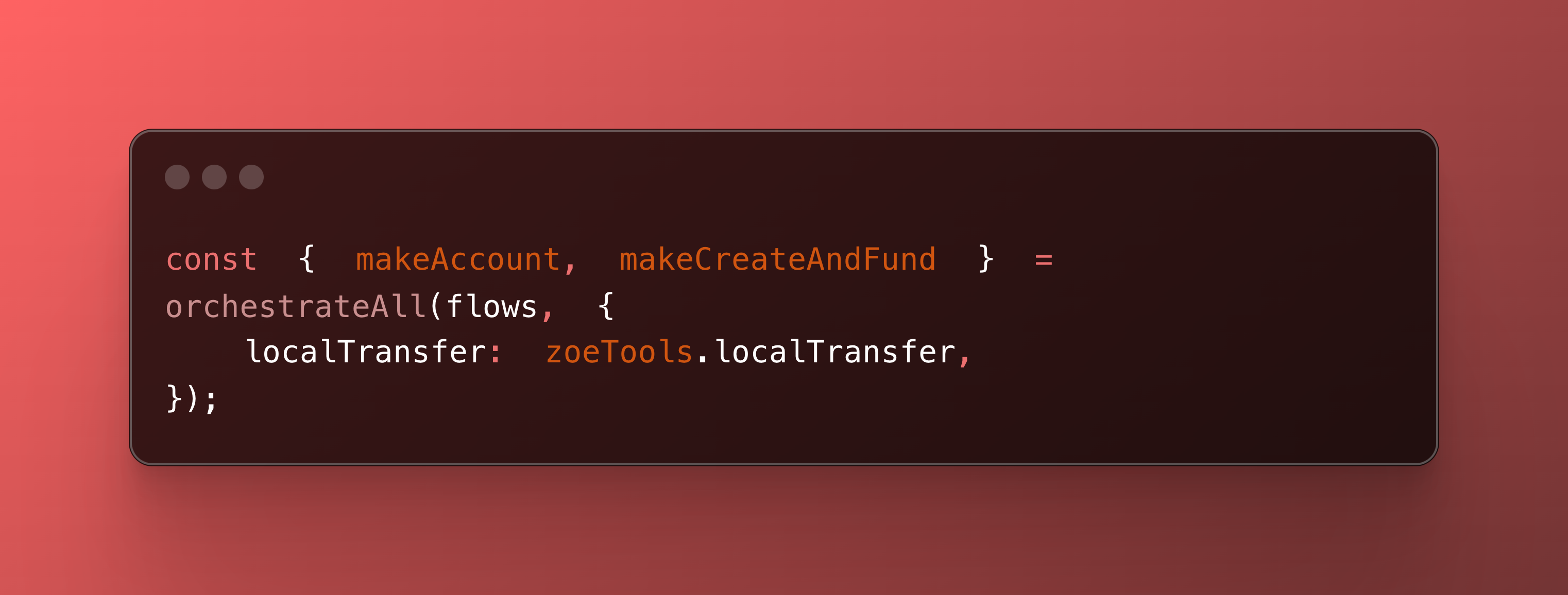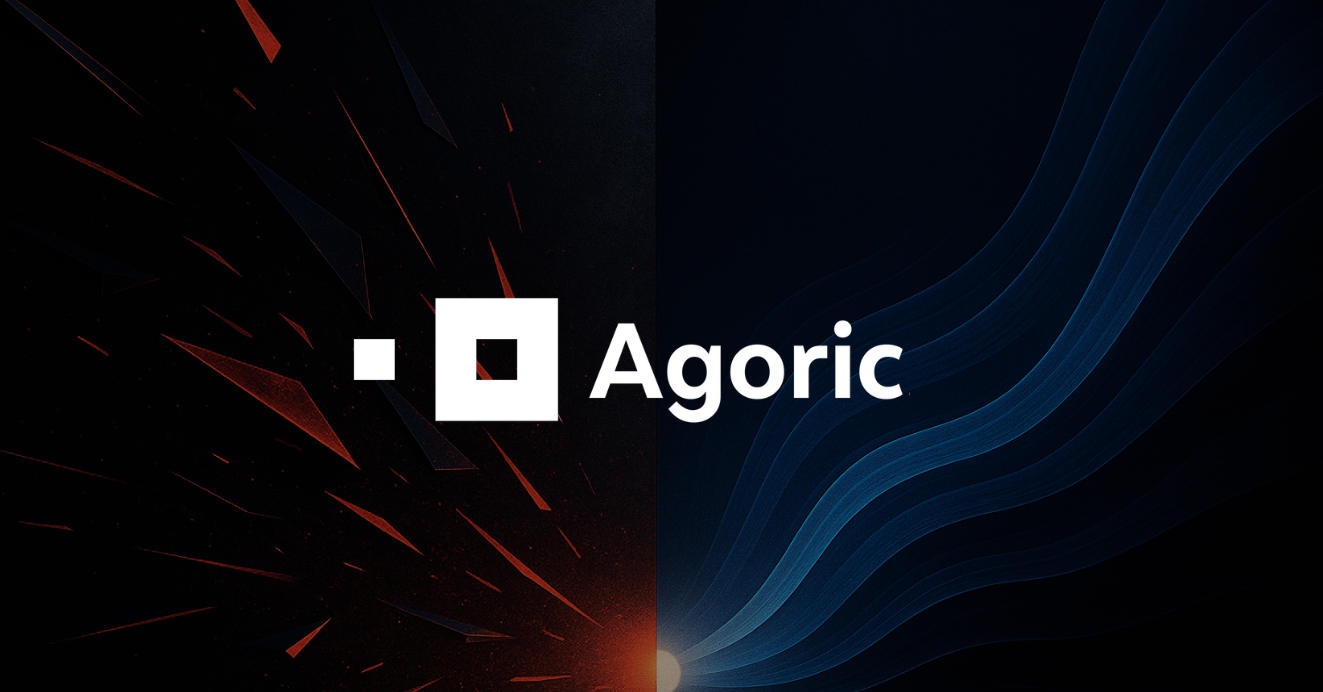Modern Web3 applications require robust chain abstraction and automation capabilities to handle complex operations across multiple chains and blocks without interruptions. Agoric Orchestration provides a versatile solution, offering persistence and adaptability that ensure your dApps remain responsive and reactive to external changes.
In this article, we'll explore how Agoric Orchestration, using examples from actual Agoric smart contracts, enables developers to build resilient dApps that can handle external triggers, automate processes, and maintain continuity across multiple blocks. We'll dive into use cases across decentralized finance (DeFi), prediction markets, and DAOs, showcasing how these features could potentially enhance the functionality and scalability of your applications.
Why Orchestration Matters for Chain Abstraction
Extend Contract Actions Across Blocks and Chains
Agoric contracts are uniquely capable of acting across multiple blocks. Where other contracts run processes that conclude in one block, Agoric contracts maintain their state and functionality across blocks, enabling them to handle asynchronous operations and stay responsive to real-time data and events. This is essential for chain abstraction, where contracts need to interact seamlessly across different blockchains.
By abstracting interactions across chains, Agoric allows dApps to operate at a higher level of functionality. Developers can create multi-chain workflows that operate continuously, enhancing the efficiency and responsiveness of decentralized applications.
Example: Orchestrating Multi-Chain Asset Transfers
One example of Agoric’s advanced orchestration capabilities is facilitating multi-chain asset transfers. In this example, a sample contract abstracts the process across different chains, automatically managing each phase from account creation to transfer verification, without manual input:

const { makeAccount, makeCreateAndFund } = orchestrateAll(flows, {
localTransfer: zoeTools.localTransfer,
});In this case,
orchestrateAllLeverage Agoric for Cross-Chain Asset Transfers
Imagine a scenario where a user transfers assets from Agoric to a Cosmos-based chain. Agoric orchestration abstracts away the chain interactions, creating accounts on both chains and managing the transfer autonomously so the entire flow can be handled without manual intervention, making it highly efficient and scalable:

const localAccount = await agoric.makeAccount();
const remoteAccount = await chain.makeAccount();
await localAccount.transfer({ denom: 'ubld', value: amt.value / 2n }, remoteAddress);This contract execution persists throughout each stage, ensuring that the asset transfer happens without any additional intervention, saving time and simplifying complex, cross-chain workflows.
Automating External Event Handling: Oracles, Off-Chain Data, and Market Changes
To stay competitive in an increasingly multi-chain world, many modern dApps must respond automatically to external factors like oracle data feeds, off-chain market data, and price changes. Agoric contracts are ideal for this type of automation. An example could be a contract that interacts with an oracle to adjust interest rates in a DeFi application.
In this example, the contract remains active across blocks, waiting for changes from the price oracle. When a new price is fetched, the contract automatically adjusts interest rates without requiring any manual input. This process makes the contract highly responsive to external data, ensuring your dApp can provide up-to-date services based on real-world conditions.
Another compelling use case could be DAO governance, where proposals are voted on by the community, and actions need to be triggered based on the results. Orchestration makes it easy to handle governance voting that spans multiple blocks.
By keeping the contract ‘active’ during the entire voting process, the DAO can automatically trigger actions like fund allocation or policy changes based on the final vote. This approach eliminates the need for constant monitoring by developers or users and helps ensure the integrity of governance processes.
Automating Complex Workflows: Recurring Tasks and Timed Actions
Agoric orchestration is also ideal for automating complex workflows so they require minimal human intervention, such as recurring payments, staking rewards, or periodic asset redistributions. Platform features like on-chain timers make it easy for devs to handle timed actions effortlessly.
Possible Example: Automating DAO Fund Distribution with On-Chain Timers
In a DAO context, an on-chain timer can distribute funds periodically without manual input. Here’s how it works:
Set Up the Timer: The contract initializes a recurring action based on a pre-set timer, such as weekly fund disbursements.
Automate Distribution: At each interval, the contract distributes funds to designated accounts, ensuring consistency and accuracy without human oversight.
Leverage More Time: Use all of the time you save by automating this process to learn a new skill.
Agoric Orchestration makes it simple to build reliable, automated processes that keep dApps functional and responsive over time.
Build Dynamic dApps with Agoric
Agoric orchestration offers a powerful, resilient foundation for building dApps that can handle real-world complexity. Whether you're working in DeFi, DAOs, or have other cross-chain challenges, orchestration enables seamless automation, continuous state management, and real-time reaction to external events.
With Agoric, developers can create scalable applications that meet the growing demand for seamless, chain-abstracted UX. The Orchestration API empowers them to build the next wave of solutions with ease.
Getting Started with the API
Getting started with the Orchestration API is straightforward and involves three main steps:
Master the key concepts that give Orchestration its super powers!
Play with the Orchestration Basics dApp to see how orchestration can improve cross-chain functionality and enhance the user experience.
Fork the dApp to customize the code, giving you the freedom to experiment and tailor the orchestration features to your specific needs.
Trying out the API? Join the conversation on Discord to share your experience!


